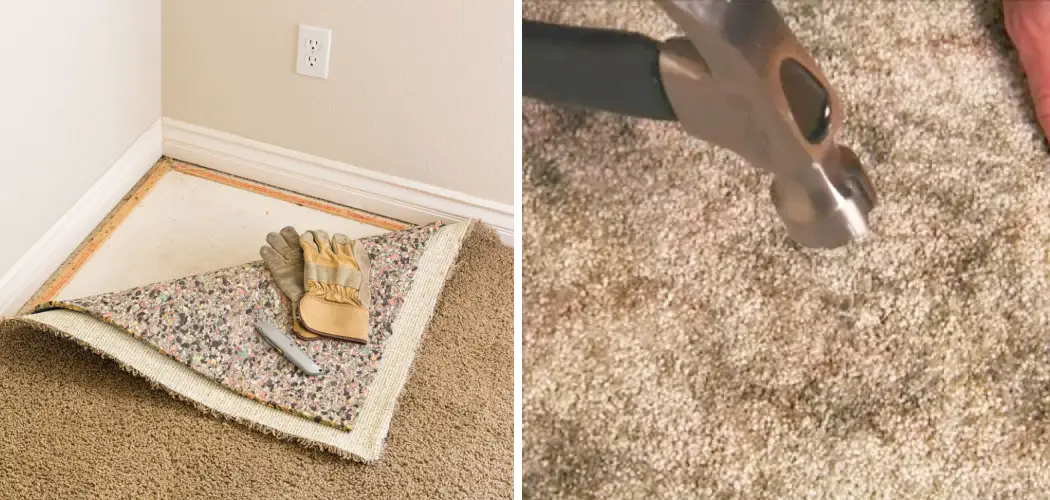Do you have carpets that seem to squeak every time you walk across them? Do they make an annoying sound that can potentially wake up the whole house? With just a few simple steps, you can put a stop to those unwanted noises and once again enjoy pristine silence under your floors.
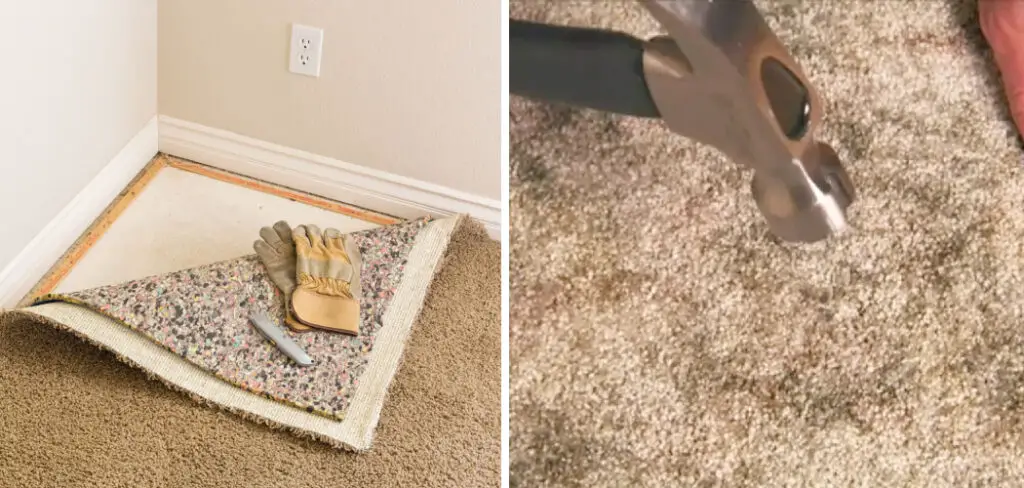
You can use various methods to ensure that your carpets don’t create more noise than necessary, including installing carpet padding before laying out the material.
Carpet padding creates a barrier between your floorboards and the long-pile carpet fibers, thus reducing any friction while helping absorb shock from walking or furniture moving around interior areas of homes or businesses. Additionally, using staples in certain spots on creaking boards is extremely useful for getting rid of flooring squeaks altogether!
Keep reading to learn more about how to stop floors from squeaking under carpet.
What Will You Need?
In order to stop floor squeaks under the carpet, you will need the following materials:
- Carpet padding
- Staple gun and staples
- Tape measure
- Hammer
Once you have gathered the necessary supplies, follow the steps below to begin fixing your squeaky floors.
10 Easy Steps on How to Stop Floors From Squeaking Under Carpet
Step 1. Check for Loose Floorboards:
The most common cause of squeaky floors is loose floorboards that move and rub against the subfloor. Use a flashlight to get a better look at the area you’re working on, and use a hammer to tap any loose boards back into place. If they don’t move, you may need to use a crowbar or pry bar to loosen them up.
Step 2. Measure and Cut Carpet Padding:
Using a tape measure, measure the length of your flooring and cut the carpet padding accordingly. Make sure that it is slightly larger than the actual space so that there are no gaps when it’s laid out on top of your floors. As for thickness, you should use padding that is at least ¼ of an inch thick.
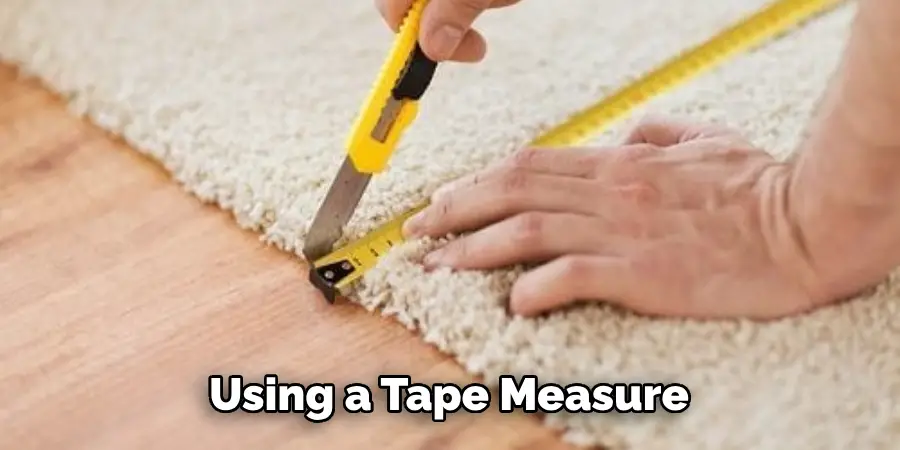
Step 3. Install Carpet Padding:
Lay down the carpet padding over your entire flooring area while ensuring it does not overlap or bunch up anywhere between pieces. Secure its position with staples every 8-10 inches in order to prevent it from moving around. This will ensure the padding stays in place and help keep your carpets from squeaking.
Step 4. Install Carpet:
Place your carpet over the padding and cut it to the desired size so that all edges fit neatly along with walls and cabinets. Staple any loose areas in order to keep them securely in place. You can also use adhesive tape in areas where you cannot staple the carpet down.
Step 5. Walk Around Room:
Once everything is installed, take a walk around the room, checking for any squeaks or creaks from floorboards underneath the carpet. If you hear anything, use a hammer again to tap down these areas until they are firmly in place. Be careful not to force any boards too much, as this could cause them to break.
Step 6. Replace Staples as Needed:
After walking around the room again, check to ensure that all staples are still secured in their places and replace any if needed. Ensure that all staples are tightly fitted and will not easily come out. Otherwise, you may need to repeat the steps above.
Step 7. Re-Secure Carpet Padding:
Finally, re-staple any areas of carpet padding that may have become undone over time. This will ensure that your flooring has the right amount of cushion and support to keep it from squeaking. Additionally, it will help hold the carpet in place so that it does not bunch up or shift.
Step 8. Keep an Eye Out:
Once your floors are properly installed, keep an eye out for any signs of squeaking or creaking. If you notice any, follow the same steps above to ensure your floor remains quiet and comfortable. It will also help you identify any areas that may need attention before they can cause further problems.
Step 9. Avoid Excessive Movement:
You may want to avoid excessive movement on the surface to keep your floors from squeaking. This could include dragging furniture or heavy objects across the carpet, which can cause friction between the fibers and floorboards. Try to limit such activities and focus on keeping your carpet properly installed and secured.
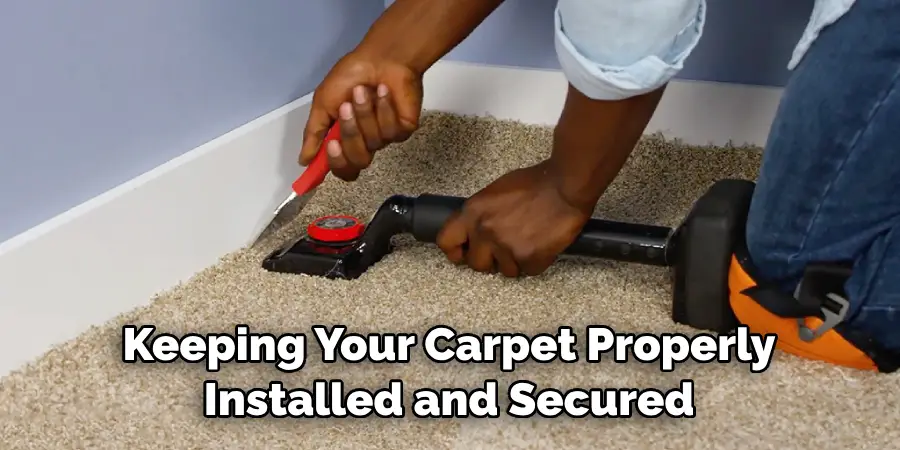
Step 10. Re-Staple Carpets Periodically:
Finally, re-staple the carpets at least once a year to ensure that all staples are secure and that no new squeaks emerge. Remember, squeaky floors can be annoying and distracting, so it’s best to take preventative measures as soon as possible. Just follow these simple steps, and you should be able to stop floors from squeaking under carpets in no time.
By following these simple steps, you can prevent your floors from ever making an embarrassing loud noise again! Keep in mind that taking the time to install your carpets and padding properly will pay off in terms of sound quality inside your home or business. Happy squeak-free flooring!
5 Additional Tips and Tricks
1. Make sure to use the right type of padding for your carpet. Different materials require different kinds of cushioning and support in order to stay secure and prevent squeaking. Generally, adding a thicker layer of padding between your carpet and the floor will help reduce sound.
2. Use plywood or particle board to even out the surface underneath your carpet. If there are any dips or irregularities in the subfloor, they can be filled in with plywood to make it as flat and smooth as possible; this will also provide stability for your carpet, reducing the chances of squeaks.
3. Apply glue adhesive on both sides of the wood strips before securing them to the flooring beneath the carpet. This creates a strong bond that prevents any movement and reduces noises caused by your floors settling or shifting over time.
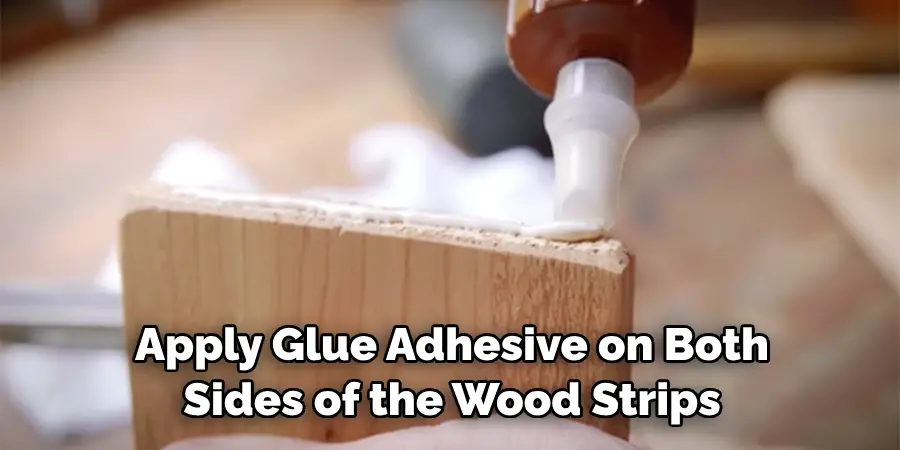
4. Install strips of metal hangers along each wall connecting the joists on your floor. This will help distribute the weight of the carpet more evenly, reducing any additional stress on one spot and therefore reducing squeaking.
5. Add a layer of acoustic foam to reduce noise from footsteps or other activities in the room. The foam absorbs sound waves instead of bouncing them back off the walls, which can cause floors to squeak.
With these tips and tricks, you should be able to stop your floors from squeaking under the carpet. Make sure to take special care when preparing the subfloor beneath your carpet, and use appropriate padding and adhesive materials for installation. Additionally, consider using acoustic foam for extra noise reduction. Following these steps will keep your floors quiet!
5 Things You Should Avoid
1. Avoid using too much adhesive when attaching your carpet to the floor. Too much adhesive can weaken the bond and create an uneven surface, leading to squeaking.
2. Don’t skip adding cushioning or padding underneath your carpet; this is essential for creating a secure fit with no movement that can cause squeaks.
3. Refrain from nailing down the edges of the carpet directly to the boards below it as this will create additional strain on one spot and cause cracks in the floor over time.
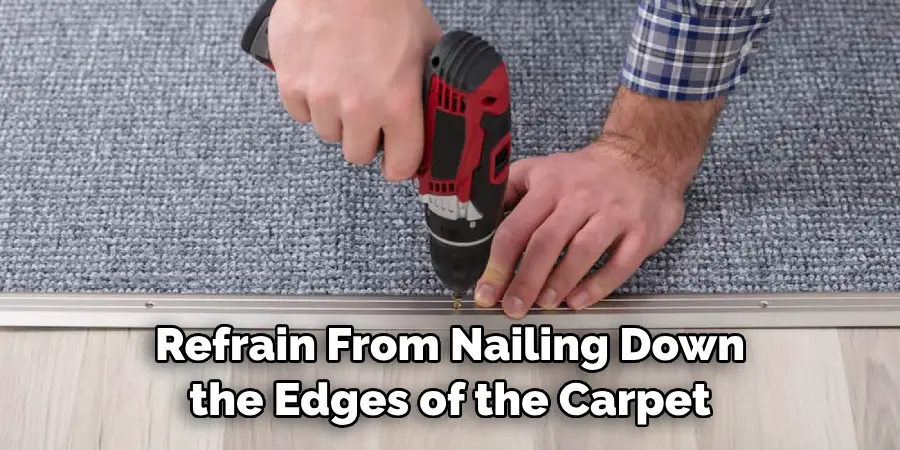
4. Don’t use staples to attach your carpet since they won’t provide enough stability and may result in strange creaks or other unpleasant noises.
5. Steer clear of installing the carpet yourself if you don’t have the proper equipment, as a professional installer may be better equipped to handle the job. This will help ensure that everything is done correctly and your floors won’t squeak.
You can avoid these five pitfalls to keep your carpeted floors from squeaking. Make sure to take all necessary steps in preparation for installation and use appropriate materials like padding, adhesive, and metal hangers where necessary.
Conclusion
In the end, stopping them is possible if you have floors that squeak under your carpet. Depending on what’s causing the squeaking, you may need to put the carpenter’s glue, a small shim, or even a nail in the problem areas can help reduce the noise. Of course, because every situation is different, it requires some degree of trial and error to identify which method might best work for you. To ensure buying all of the necessary supplies isn’t costly, consider crafting something with items from around your home!
As long as you take that extra time and care to ensure your carpets no longer squeak, say hello to less frustration and stress-filled moments – especially when walking across your floor late at night. Why not gather any scraps of wood, heavy fabric, and other materials lying around the house and craft an item you’ll be proud of?
Hopefully, the article on how to stop floors from squeaking under carpet has given you the tools and guidance to fix this issue. With the right knowledge and materials, you can have your floor squeak-free in no time. Now, you can enjoy your carpeted floors without the annoying sound of squeaks!

